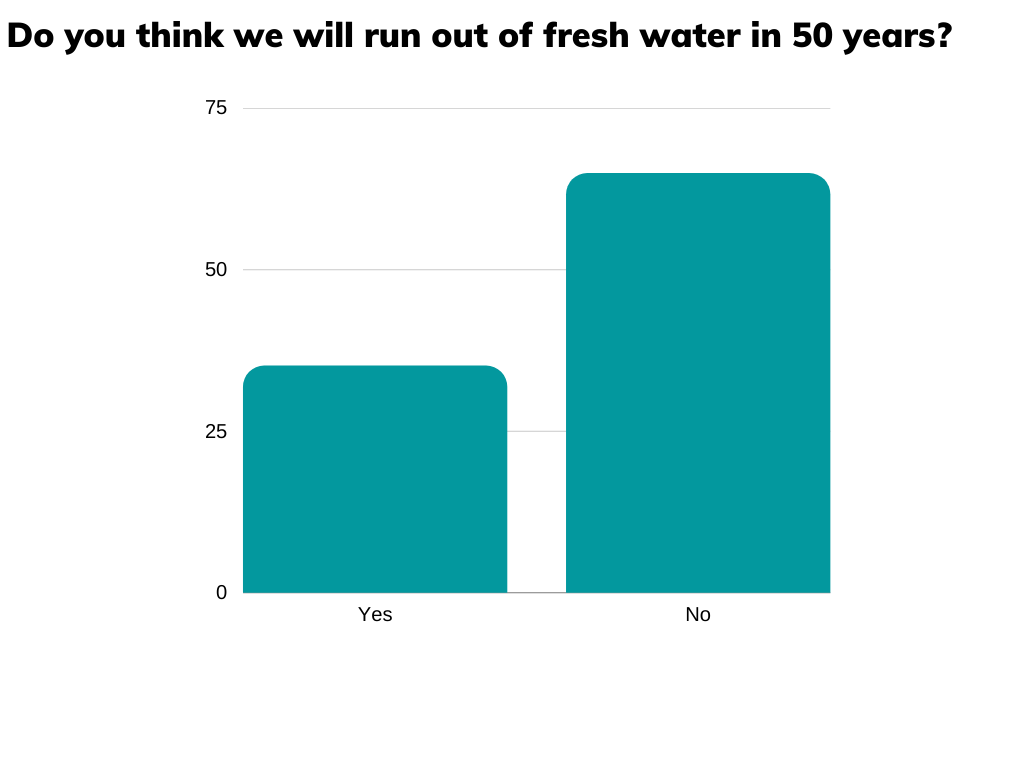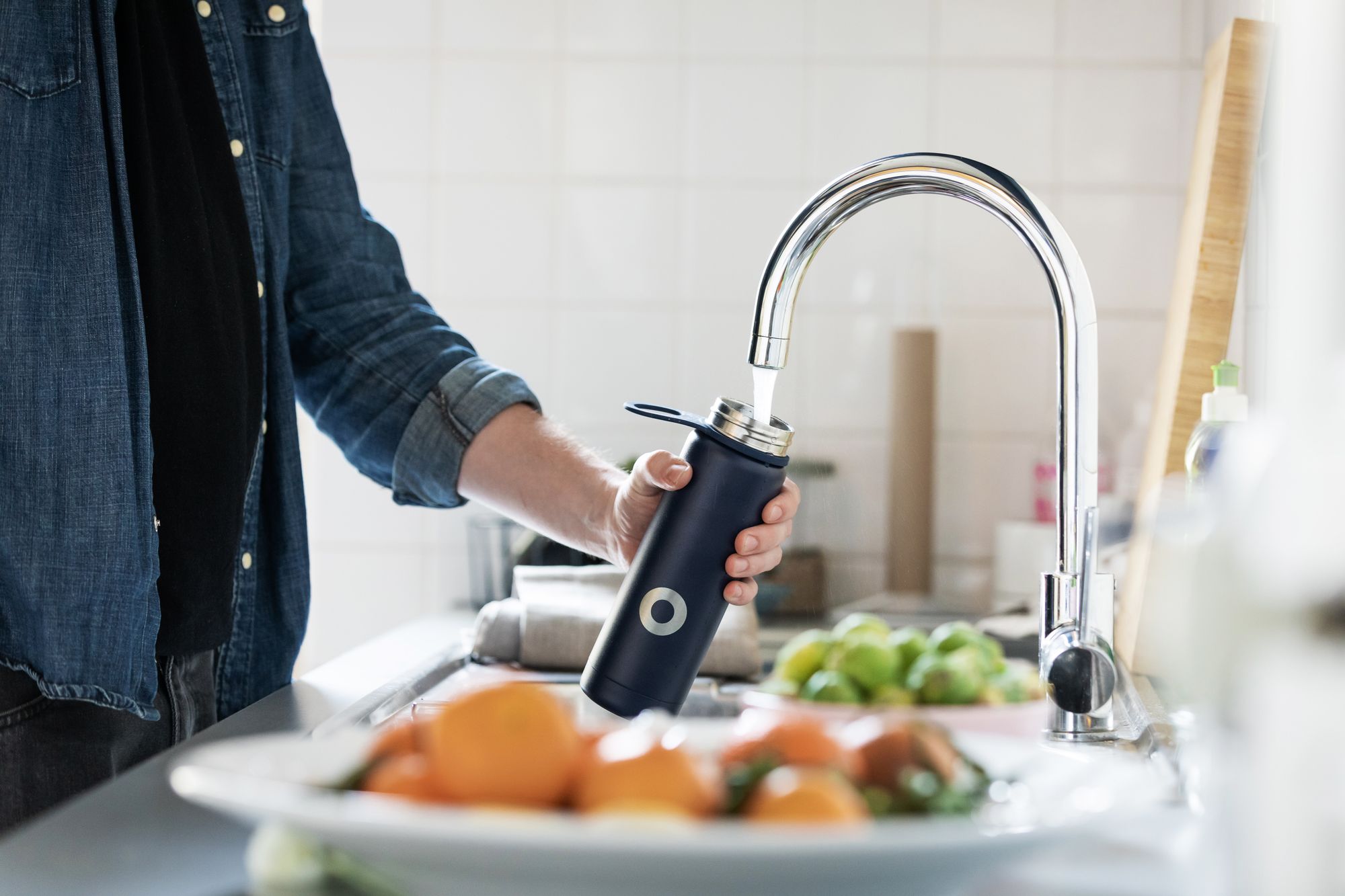
💡 Optimist's Edge: Your fresh ideas could help solve the water crisis
The global water crisis is serious. But so are the efforts to solve it. Is the elimination of thirst next? Ulrika Gerth guides you through this essential topic.
Share this story!
📉 What people think
Headlines about water scarcity have occupied the spotlight in recent years. Paired with pictures of bone-dry rivers and drought-ravaged landscapes, you may think the future looks bleak.
The Earth’s share of available freshwater is, after all, tiny. Picture this: if the world’s water supply were 100 liters (26 gallons), the usable supply of freshwater would be only about 0.003 liters (one-half teaspoon).

It’s hardly surprising, then, that a Warp survey shows 35 percent of respondents believe we will run out of fresh water in 50 years. But the rest, nearly 65 percent, are optimistic; they don’t think that will be the case.
Who is closest to the truth?
📈 Here are the facts
The drive to bring fresh water to some of the world’s most water-stressed areas has unleashed a tsunami of new technology.
- Life-saving. For the leaders in desalination, turning undrinkable seawater into fresh water is not only a multi-billion dollar industry but a literal lifesaver. In Saudi Arabia, 70 percent of the drinking water comes from the sea. In Israel, water technology has become an engine for export-oriented growth.
- Lower costs. At the same time, the cost of desalination has dropped by more than half in three decades. In 2020, the cost of one cubic meter of desalinated water reached a new record low (plant in Dubai). The number of people who get water from desalination plants now tops 300 million, with Senegal and the Philippines among the newcomers.
- Less energy use. Engineers at Purdue University have invented “reverse batch osmosis,” a more energy-efficient desalination technique that promises to save hundreds of millions of dollars and enable more places to adopt the technology (“it could be transformative”).
- Affordable access. Chinese and American researchers are about to start scaling a solar-powered desalination device that could provide a family in an off-grid area with drinking water for only $4.

The pioneers of water technology are looking beyond the oceans, too. To take two examples:
- Sweden-based Drupps offers scalable recovery of airborne water to help industries reduce water footprints and increase water sustainability. The market for reuse is currently growing faster than desalination.
- Another Swedish company, Wayout, has invented a plug-and-play micro-factory, the size of a container, which can clean 150,000 liters of water per month, including seawater (it can make beer, too!). The Water-as-a-Service (you pay per liter) lowers the bar for more communities to get clean water.
💡 Optimist's Edge
Access to clean, abundant, and reliable water sources is the foundation of progress. When all people can quench their thirst with safe drinking water and clean their hands and wash their vegetables without the threat of contracting the disease, the future looks bright.
💡 For the developing world, in particular, water security will lead to a revolution in improved health and productivity.
Clean water and sanitation are the antidotes to 80 percent of illnesses that plague everyday life in developing countries. The end of waterborne disease also means an estimated 446,000 more children will live to celebrate their 5th birthday every year.
When lack of water ceases to be a problem, so do obstacles to development. A new desalination plant in Namibia promises to infuse new life into the aridest region in sub-Saharan Africa.
Better water access is also a catalyst for new ideas. The proliferation of desalination has created a trailblazing industry — brine mining. Rather than a desalination waste product, brine is being explored as an alternative source of minerals and rare metals. Mining would, in other words, turn sustainable.

👇 How to get the Optimist's Edge
Demand for desalinated water is growing at approximately 15 percent per year. As water scarcity affects nearly 2 billion people, the need for continued innovation is massive.
❓ So, how do you get the most out of this knowledge?
- Dream big: See a need? Fill it with a startup. That’s what the Wayout founders did. In 2021, water startups raised $471 million across 90 countries, and water-specialized investment funds are gathering pace.
- Invest: 40 percent of the world’s population lives within 100 kilometers of the sea. That fact alone speaks in favor of investing in desalination stocks. Many mutual funds and exchange-traded funds (ETFs) also focus on water sustainability. Here are 5 funds you could tap. Solar technology is another area to keep an eye on, as the energy-intensive desalination industry is under pressure to adopt renewables. And let’s not forget the reuse and brine-mining companies.
- Make it a career: Take a peek, for example, at the Young Leaders Program of the International Desalination Association or boost your credentials with a certificate.
- Support nonprofits: A range of charities work tirelessly to bring clean water to some of the world’s most impoverished areas. Will you donate or volunteer?
The elimination of thirst may happen with the help of people like yourself.
❓ Want more? Discuss with others in our forum!
Please share your ideas and thoughts with other Premium Supporters in our Facebook group. Maybe you will find your future business partner or investor.
You now have an advantage because you have gained this knowledge before most others –